To Err is Human, To Correct Divine: How the Artists Behind The Saint John’s Bible Used Ancient Methods to Correct Errors
The Word of God, written by the human hand, will always have mistakes. Rather than being so strict on the human inclination toward imperfection, the artists who created the first hand-written manuscript commissioned by a Benedictine monastery since the invention of the printing press, The Saint John’s Bible, decided that the mistakes were not nuisances, but special in their own right.
The nine “celebrated” errors featured in The Saint John’s Bible call attention to the fact that this, indeed, was crafted by a human hand. They are so human and so touching.
Ancient scribes agreed. There is a long history of creative ways to correct mistakes, such as a forgotten line or an ink smudge. These ancient techniques are precisely the ones that the modern artists of The Saint John’s Bible used.
In a series posted to the Hill Museum and Manuscript Library (HMML) YouTube channel, Curator of The Saint John’s Bible, Tim Ternes dives into the historical origins of the tools, methods, and materials used in making The Saint John’s Bible.
One segment of the series, titled Ancient Methods, Modern Results, focuses on the errors found in The Saint John’s Bible and how the scribes used ancient methods to correct them.
Historical Treatment of Errors in Manuscripts
In the video, Ternes encourages us to consider a Manuscript commentary on the gospels of Matthew and John, circa 1240, in which the scribe simply crossed out an incorrect line to acknowledge the mistake.
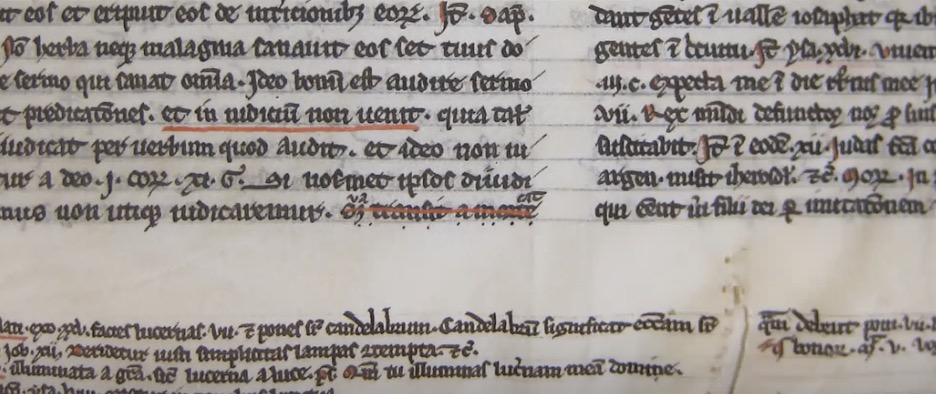
In a more extreme example, the ca. 1250-62 work entitled Decorated Canceled Page from the Abbey Bible features an entire page crossed out. It seems that the artist thought there were so many mistakes that the script was not worth saving. The illustrations, on the other hand, were.
Thankfully, because The Saint John’s Bible was scribed on calfskin vellum, there was a way for the scribes to correct their mistakes. If they caught them right away, the artists could scrape away their mistakes with a pen knife and sandpaper the ink until it was gone.
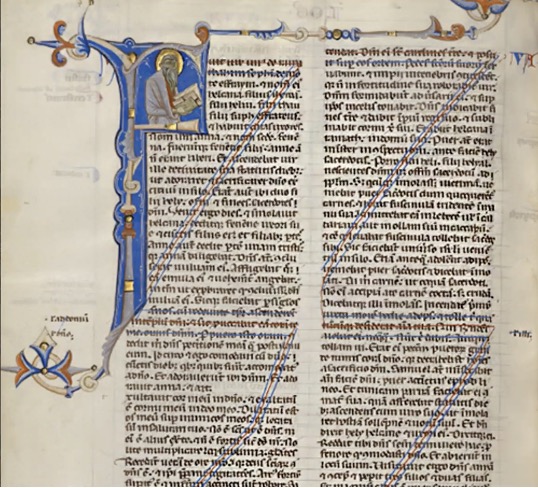
“It [vellum] really is quite forgiving, and allows you to be human,” said Ternes in the video.
However, what happens if, as a scribe, you’ve taken anywhere between seven to twelve hours to write a page, arrive at the final line, and discover that you’ve missed a line all the way back in the beginning? What do you do?
The Saint John’s Bible: Errors are Art
When the page featuring the Sower and the Seed illumination was scribed, for example, the artist had taken the page all the way to completion before discovering that the right-hand column was one line longer than the left. That could only mean one thing – they left out an entire line.
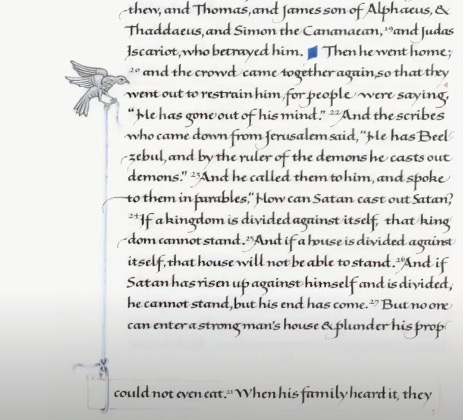
In this instance, the artist decided to integrate a red diamond, which points to a bird whose feet are holding a rope to connect the dropped line back to the text. This technique, known as a sign of return, is one that any medieval scribes would have also used.
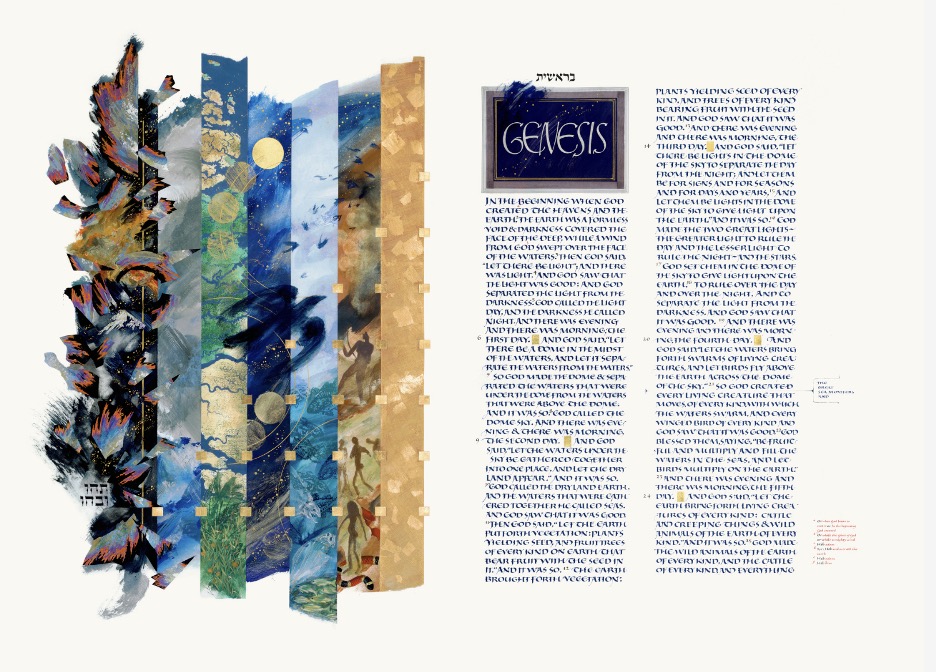
For example, the Book of Hours, a 13th-century manuscript, uses a similar technique, in which a human character points to where a forgotten line should go.
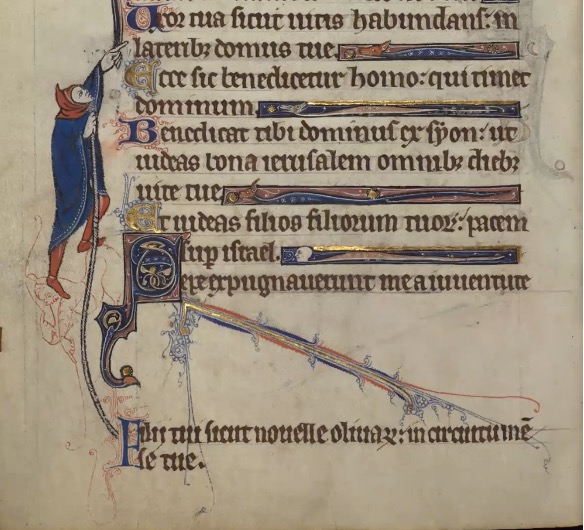
Remarkably, out of more than 1,100 pages, only nine major corrections appear in The Saint John’s Bible. Each calligrapher involved in the project made an error. The first volume, Pentateuch, ended up with three mistakes, the most of any volume. You’ll find them in the form of three birds, one in Genesis, Exodus, and Leviticus.
In other mistakes, the artists configured a bumblebee attached to a pulley system, a lemur whose surprise and bashfulness at dropping a line appear clear as day on its face, and a simple bracket, found on the very first page of the entire manuscript. Other minor errors have been discovered in the years since the manuscript’s completion, but these will remain uncorrected further proof of human fallibility. 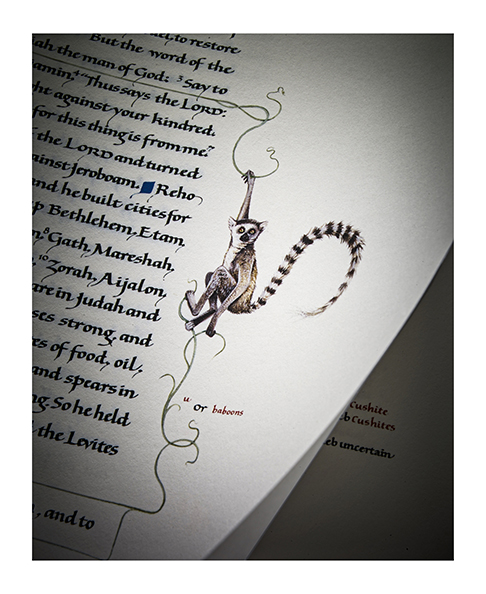
“We may have the Word of God, but it’s definitely written by human hands,” said Ternes at the video’s close.
Click here to watch the full video on YouTube.
The Saint John’s Bible: Ignite the Spiritual Imagination
To read more stories similar to this one, visit the blog on saintjohnsibible.org and subscribe to the monthly e-newsletter, Sharing the Word.


